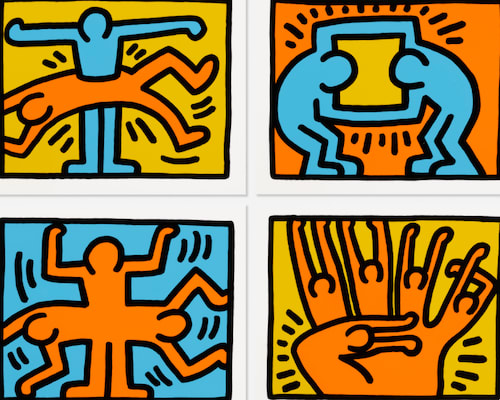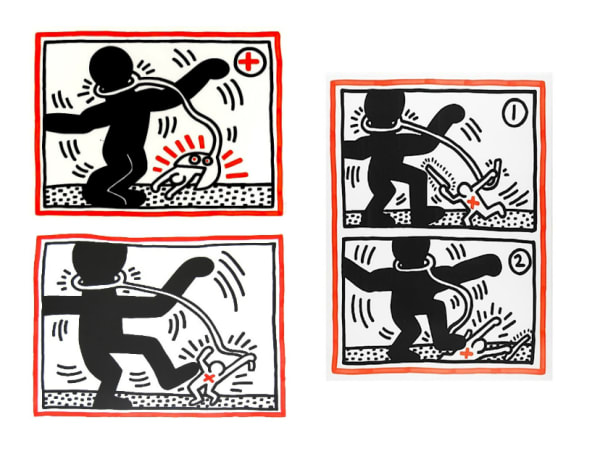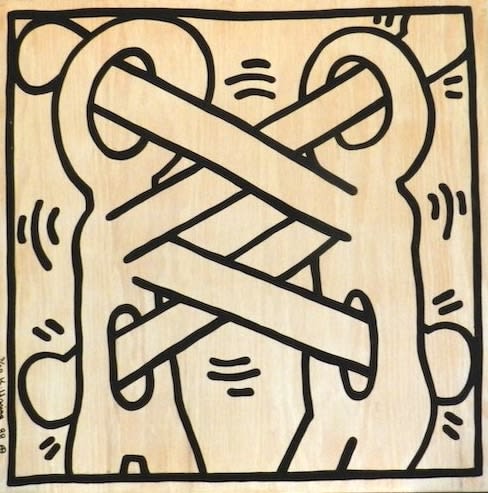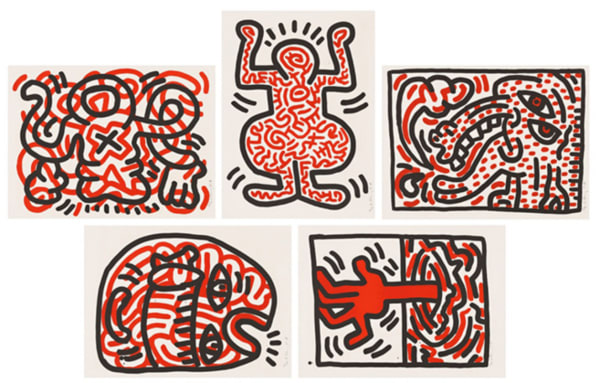Keith Haring’s name evokes a cascade of visual memories—radiant babies, barking dogs, dancing figures, and bold black lines. His work is universally recognizable, accessible, and deeply embedded in the fabric of popular culture. Yet beneath the vibrant surface of his iconic motifs lies a rich, politically charged, and historically significant body of work. Keith Haring is not just a pop culture icon; he is a pivotal figure in 20th-century art whose importance stems from his ability to democratize art, address pressing social issues, and shape visual language in a way few others have managed.
Artistic Innovation and Visual Language
At the heart of Haring’s importance is his unique visual language. His work broke away from traditional formats and fine art elitism by embracing simplicity and immediacy. Using line as a primary vehicle of communication, Haring developed an almost hieroglyphic language filled with recurring symbols: the Radiant Baby (innocence and purity), the Barking Dog (authority and obedience), and the Flying Saucer (unknown threats or higher powers). These motifs functioned like a universal language—accessible, repeatable, and immediately comprehensible across cultural and linguistic boundaries.
Influenced by semiotics, Jean Dubuffet’s art brut, graffiti, and the work of contemporaries like Jean-Michel Basquiat, Haring refined a style that fused the raw energy of street culture with the discipline of formal composition. His line work—always confident, fluid, and rhythmic—captured the pulse of the city and the urgency of the issues he addressed. Haring managed to walk a fine line: his work is at once spontaneous and calculated, playful and deadly serious.

Pioneer of Street Art and the Democratization of Art
Haring’s most radical artistic gesture may have been his rejection of the traditional art world’s gatekeeping mechanisms. His early chalk drawings on unused black advertising panels in New York’s subway system turned everyday commutes into impromptu art experiences. These works—quickly rendered, ephemeral, and prolific—reached a public that might never set foot in a gallery or museum.
In this, Haring became one of the key figures in the street art movement, alongside Basquiat and later artists like Banksy. But unlike many of his contemporaries, Haring was committed not just to the act of rebellion, but to inclusivity. He actively worked to make art accessible to children, the working class, and marginalized communities. He opened the Pop Shop in 1986, a retail space where people could buy affordable Haring-designed products—from posters to T-shirts—making the bold statement that fine art need not be confined to elite spaces.
Activism Through Art
Perhaps no other artist of his generation used their art more directly and persistently as a form of activism. Haring’s works tackled issues like apartheid, homophobia, nuclear disarmament, and drug addiction with powerful symbolism and public murals. A passionate advocate for AIDS awareness, Haring created many works that addressed the epidemic head-on, at a time when public discourse around HIV/AIDS was still shrouded in stigma and silence.
His 1989 piece Silence = Death—which features a pink triangle and skeletal faces—remains one of the most potent visual statements on AIDS activism. That same year, Haring founded the Keith Haring Foundation, which provided funding and imagery to AIDS organizations, children’s programs, and educational initiatives. He used his fame not for personal enrichment, but as a platform to amplify vital causes.
In doing so, Haring redefined what it meant to be a socially responsible artist. His work did not exist in a vacuum of aesthetics—it engaged with the world, questioned power structures, and demanded action.
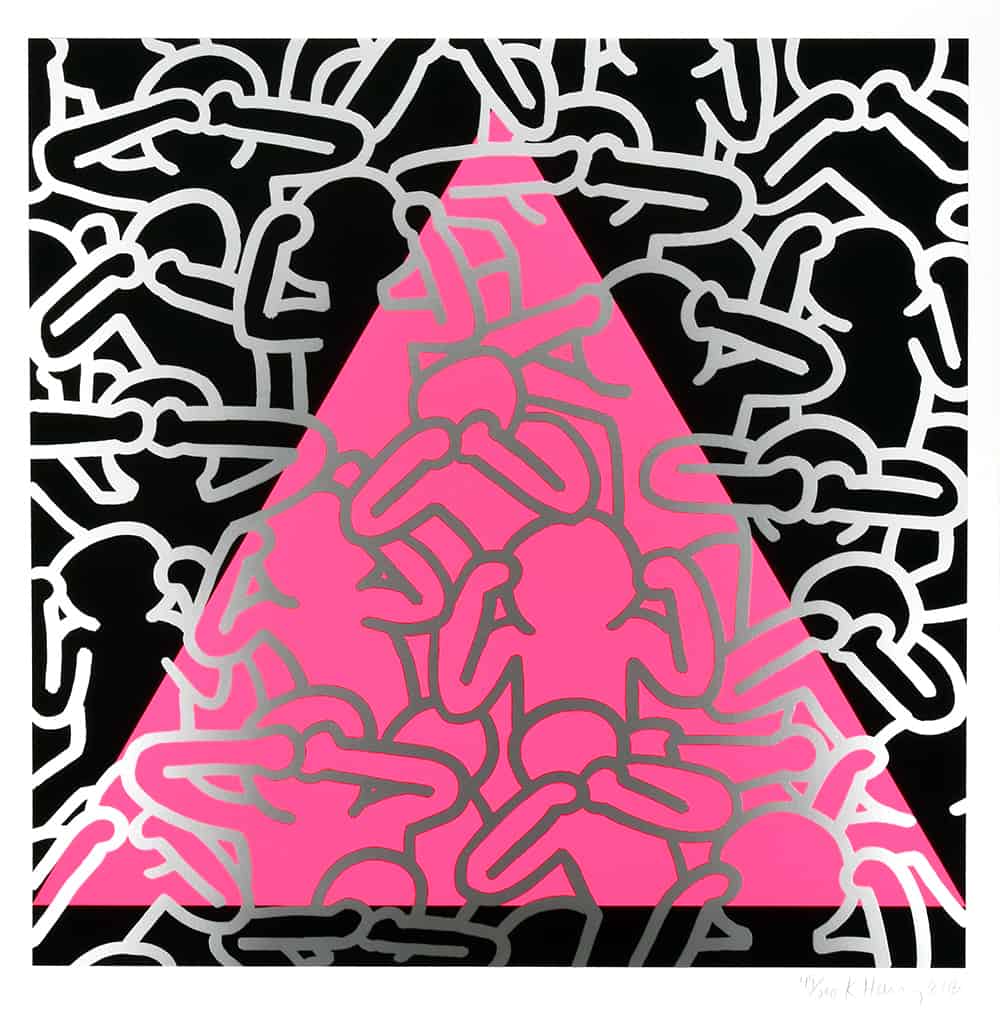
Cultural Symbolism and Global Impact
Keith Haring’s art transcended the boundaries of time and geography. Despite passing away at the young age of 31 in 1990, his impact is global and enduring. His murals can be found in Berlin, Paris, Pisa, and São Paulo. In each context, his universal symbols communicate ideas of unity, struggle, love, and resistance. His Crack Is Wack mural, painted without permission in Harlem in 1986, remains one of the most iconic anti-drug statements in contemporary art.
From fashion collaborations to music videos and education campaigns, Haring’s aesthetic has permeated popular culture. Yet unlike many pop icons, his legacy has not been diluted by commercialization. The consistency of his messaging—love, equality, action—ensures that his work continues to resonate, particularly with younger generations seeking authenticity and purpose in their cultural icons.
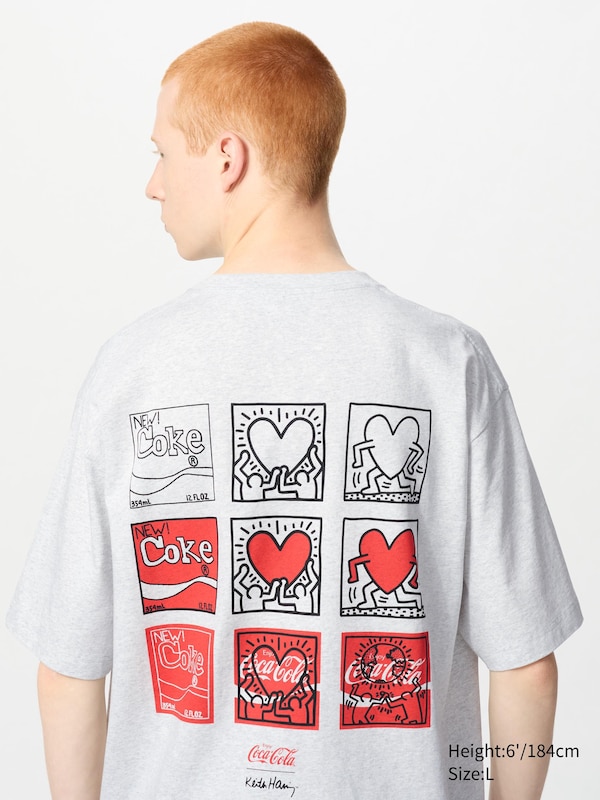
Queer Identity and Representation
As an openly gay artist during a time of widespread homophobia, Haring’s identity was not just incidental—it was central to his work. He proudly embraced and explored queer desire, community, and struggle through his art. Pieces like Once Upon a Time (1989), a mural created in the men’s restroom of the Lesbian and Gay Community Services Center in NYC, are unapologetic celebrations of gay sexuality and freedom.
In the context of the 1980s, when LGBTQ+ people were frequently demonized or erased from mainstream narratives, Haring’s visibility and refusal to self-censor was a radical act. His legacy is particularly significant in queer art history, standing as a beacon for LGBTQ+ artists who followed.
Educational Legacy and the Keith Haring Foundation
The Keith Haring Foundation, established just a year before his death, continues to support organizations that align with the artist’s values—particularly those related to children's education, HIV/AIDS awareness, and public art. Haring’s commitment to using art as a tool for social good lives on through grants, educational programs, and partnerships around the world.
He also left a substantial archive of interviews, writings, and sketchbooks that are invaluable resources for students and scholars. His diaries reveal an artist deeply introspective and politically aware, concerned with the impact of capitalism, the power of art, and the role of the artist in society.
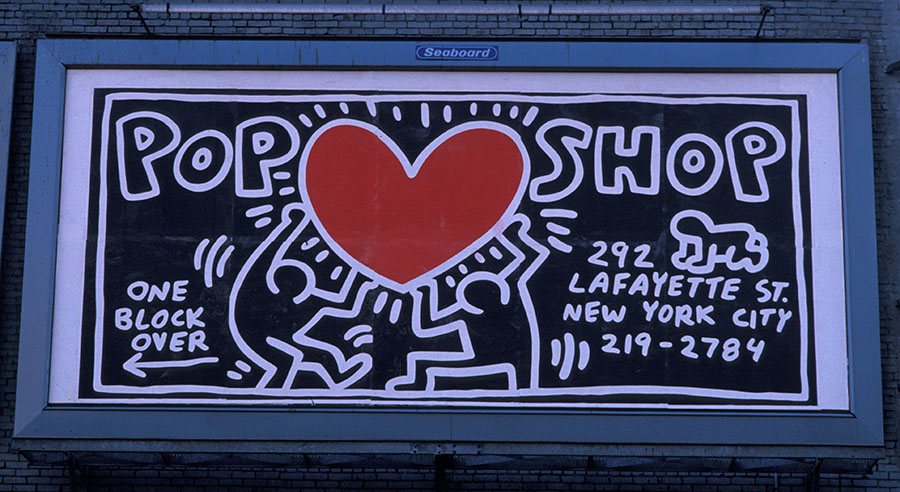
Posthumous Recognition and Continued Influence
In the decades since his death, Haring’s status has only grown. Major retrospectives at the Whitney Museum of American Art, Tate Liverpool, and Musée d’Art Moderne de la Ville de Paris have cemented his importance in the canon of modern and contemporary art. Artists from Shepard Fairey to KAWS, and even fashion designers like Jeremy Scott and Jean-Charles de Castelbajac, cite Haring as a major influence.
Importantly, Haring’s appeal has endured without the mystique of an aloof genius or the aura of inaccessibility. He remains relatable. His drawings can be imitated by schoolchildren, yet dissected by art historians. His messages—of love, justice, and resistance—feel as urgent today as they did in the 1980s.
A Legacy of Radical Joy and Political Urgency
Keith Haring’s importance lies not just in his striking visual language, but in his ability to merge joy with protest, to turn art into a public service, and to speak to the collective conscience. He democratized art, turned walls into messages, and used his brief time to leave an indelible mark on the world.
In an era of hyper-commercialized art and fleeting trends, Haring’s legacy stands as a model of how art can be radical, joyful, and transformative all at once. He showed that art could be for everyone—and that, when wielded with compassion and courage, it could also help change the world.
Discover our selection of Keith Haring paintings for sale and contact info@guyhepner.com for latest availabilities. Thinking of selling? We can help. Speak to our teams to find out how to sell Keith Haring prints. Looking for more Keith Haring content? Read out latest articles on Keith Haring's New York, our Guide to collecting Haring and the politics of Keith Haring.



